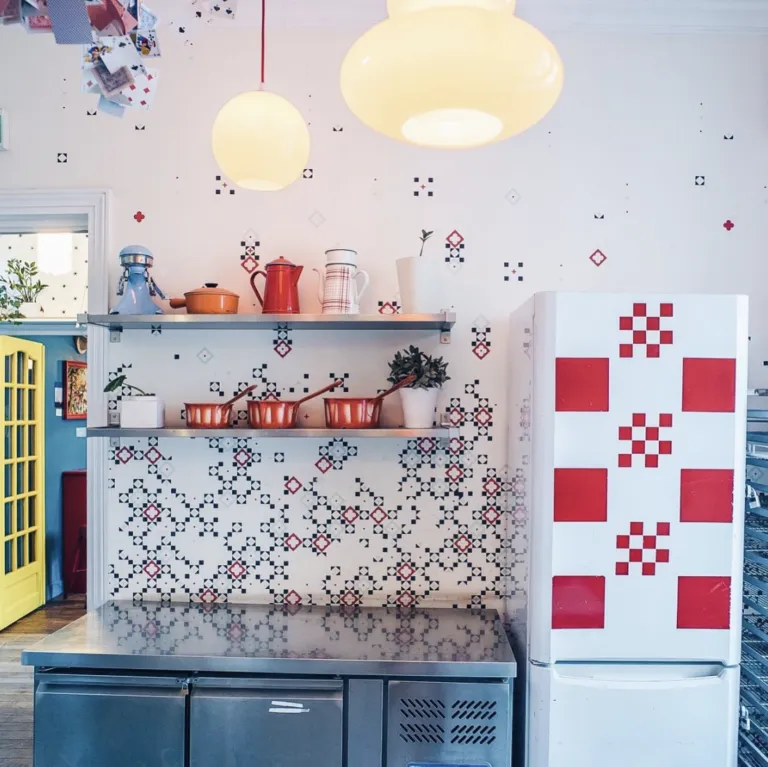Understanding Rustic Red Kitchen Decor and Safety
Rustic red kitchen decor, with its warm and inviting aesthetic, has gained significant popularity. The use of red, often combined with natural materials like wood and stone, creates a cozy and charming atmosphere. However, while the visual appeal is undeniable, it’s essential to consider the safety aspects of this design choice. Safety in a kitchen extends beyond the placement of appliances and includes the materials used, the air quality, and the overall design’s impact on your well-being. This article delves into the key safety considerations to ensure your rustic red kitchen is not only beautiful but also a safe haven for you and your family. Proper planning and awareness can help mitigate risks and create a kitchen that is both aesthetically pleasing and safe.
Common Safety Concerns in Rustic Kitchens
Several safety concerns are particularly relevant when designing a rustic red kitchen. Because rustic decor often features natural materials, it is important to assess their potential risks. For instance, the paints, stains, and finishes used on wooden elements can emit volatile organic compounds (VOCs), impacting air quality. Furthermore, the open nature of some rustic designs can pose challenges for fire safety if not carefully addressed. The choice of materials also plays a role; certain materials might be more prone to fire or less resistant to moisture and pests. Ensuring proper ventilation and using fire-resistant materials are crucial to mitigating these risks. Understanding these common concerns is the first step in creating a safe and enjoyable kitchen environment.
Off-Gassing and Volatile Organic Compounds (VOCs)
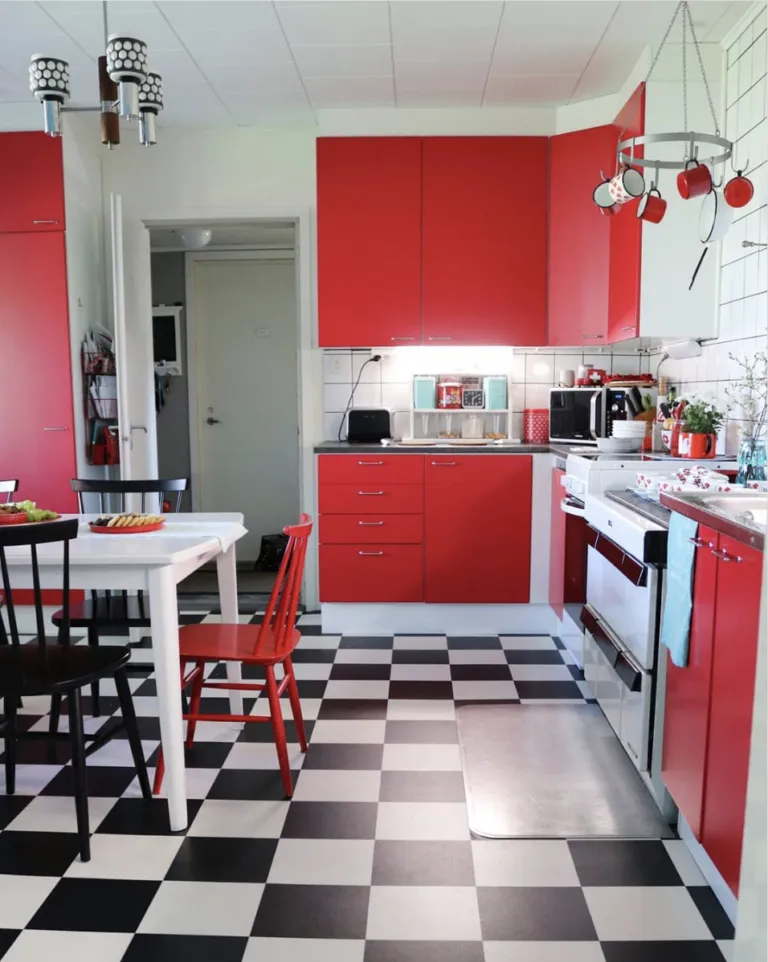
One of the primary safety considerations in any kitchen, including rustic red designs, is the presence of volatile organic compounds (VOCs). VOCs are chemicals emitted as gases from certain solids or liquids. They are found in various building materials, including paints, varnishes, and adhesives commonly used in kitchens. Exposure to high levels of VOCs can lead to health problems, such as respiratory issues, headaches, and even long-term health effects. The extent of the off-gassing depends on the materials used and the ventilation of the space. Choosing low-VOC or zero-VOC products for your paint, finishes, and other materials is critical to minimizing this risk. Consider painting with eco-friendly materials and ensuring good ventilation, especially during and immediately after the painting or construction process. Using low-VOC products is an essential step towards ensuring a healthy kitchen environment.
The Impact of Paint and Finishes
The paint and finishes used in your rustic red kitchen decor significantly impact air quality and overall safety. Traditional paints and finishes often contain high levels of VOCs, which can persist in the air for a long time after application. The red color, whether from paint or stain, should be chosen with safety in mind. The use of natural stains or water-based paints is preferable to solvent-based alternatives. Water-based paints generally have lower VOC emissions and are less likely to trigger allergic reactions or respiratory problems. When selecting paint, check the product label for VOC content and look for certifications from organizations that test and certify low-emission products. Furthermore, the finish on wooden surfaces can affect the durability and cleanability of the materials. Using finishes that are resistant to moisture and easy to clean is also essential to maintaining hygiene in the kitchen.
Choosing Safe Paint and Finishes for Your Kitchen
When designing a safe rustic red kitchen, the choice of paints and finishes is of utmost importance. Prioritize low-VOC or zero-VOC options to minimize harmful emissions. Water-based paints are generally a safer choice than oil-based ones. Look for certifications such as Green Seal or the Greenguard certification, which indicate that the product meets stringent standards for low chemical emissions. For wooden elements, consider using natural oils and waxes instead of traditional varnishes or lacquers, as these often have fewer harmful chemicals. Ensure that the products are appropriate for the specific surfaces in your kitchen. For instance, surfaces prone to moisture and spills, such as countertops and cabinets, will need finishes that are durable and water-resistant. Testing the products in an inconspicuous area before applying them extensively will help you ensure that they meet your aesthetic and safety requirements.
Fire Safety in Rustic Red Kitchens
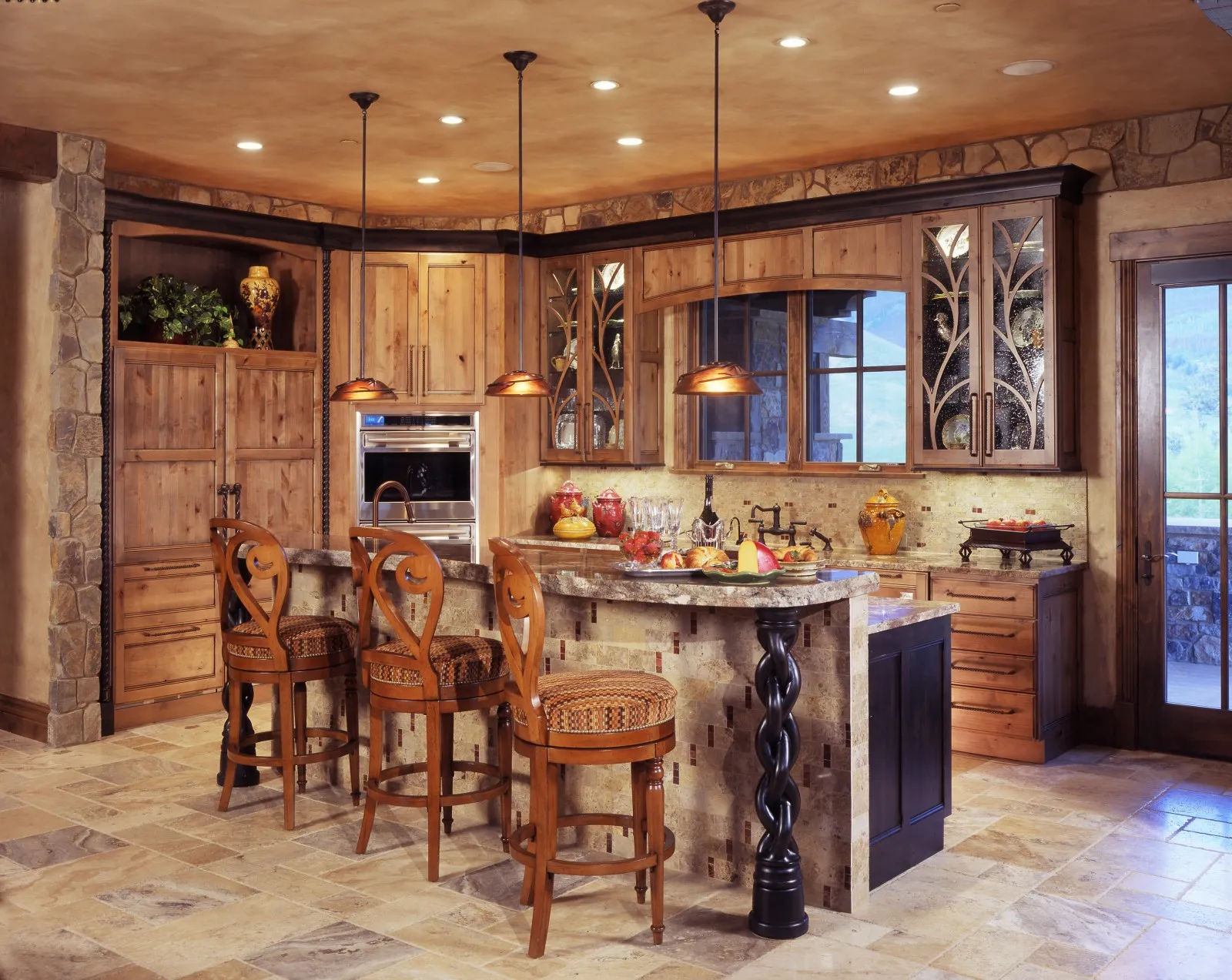
Fire safety is a critical consideration in any kitchen, but it is particularly relevant in rustic red designs. Rustic kitchens often feature a lot of wood, which can be highly flammable. Combine this with the potential for open flames from cooking and other appliances, and the risk of fire increases. Proper planning and implementation of fire safety measures are essential. This includes using fire-resistant materials, installing smoke detectors and fire extinguishers, and ensuring that electrical systems are up to code. Regular maintenance and inspection of the kitchen are crucial to identifying and addressing potential fire hazards. Taking proactive steps to improve fire safety will provide safety for you and your family and is a fundamental part of designing a safe rustic red kitchen.
Materials and Fire Resistance
The materials you choose for your rustic red kitchen decor can significantly affect its fire resistance. Certain materials, like solid wood, can be more prone to ignition than others. When incorporating wood, consider using treatments or finishes that increase its fire resistance. Fire-resistant paints and coatings can also be applied to walls and cabinets. The use of non-combustible materials such as stone, tile, and metal in high-risk areas like around the stove or fireplace is also recommended. Always check the fire ratings of the materials you are considering. Building codes usually mandate certain fire resistance standards for construction materials. Incorporating fire-resistant materials does not necessarily eliminate the risk of fire, but it significantly reduces it and provides crucial extra time for occupants to evacuate the premises.
Preventing Fire Hazards
Preventing fire hazards in a rustic red kitchen requires a combination of design choices, safety equipment, and regular maintenance. Keep flammable materials like curtains, towels, and paper products away from the stovetop and other heat sources. Install smoke detectors and carbon monoxide detectors throughout your kitchen and home, and test them regularly. Place a fire extinguisher in an accessible location and make sure you know how to use it. Ensure that your electrical wiring is up to code and inspect it regularly for any damage or wear and tear. Avoid overloading electrical outlets, and never leave cooking unattended. Consider adding a fire-resistant backsplash to your kitchen. Regular inspections, routine maintenance, and being vigilant of potential risks are essential practices for the fire safety of your kitchen.
Air Quality and Ventilation in a Rustic Kitchen
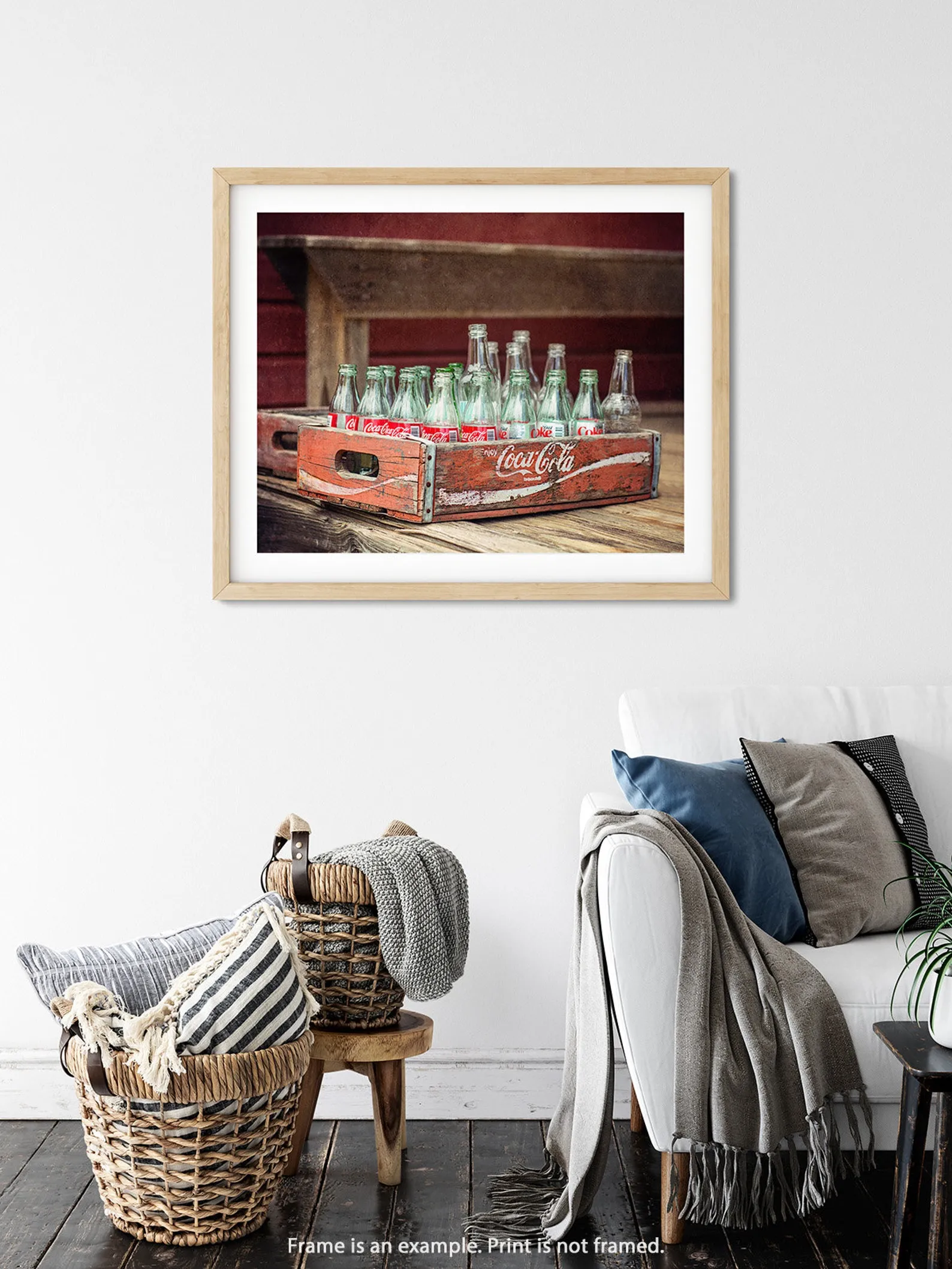
Maintaining good air quality is essential in any kitchen, especially in a rustic setting where natural materials and finishes are often used. Proper ventilation can significantly reduce the concentration of VOCs and other pollutants, ensuring a healthier environment. Air quality is not only about eliminating harmful chemicals but also about controlling moisture and preventing mold and mildew growth. A well-ventilated kitchen is critical for both health and the durability of your kitchen materials. Effective ventilation helps remove cooking odors, excess heat, and moisture, all of which contribute to a comfortable and safe cooking environment. Investing in a good ventilation system and maintaining it properly is a fundamental step in designing and maintaining a safe and healthy rustic red kitchen.
The Role of Ventilation Systems
Ventilation systems play a vital role in maintaining good air quality in the kitchen. A powerful range hood that effectively captures and removes smoke, grease, and odors from the air is essential. Choose a hood with sufficient CFM (cubic feet per minute) to handle the volume of cooking you do. Consider installing an exhaust fan to vent moisture and air out of the kitchen. In addition to removing pollutants, proper ventilation can prevent the buildup of moisture that can lead to mold and mildew growth. Regular maintenance of your ventilation system, including cleaning filters and ducts, is important to ensure its effectiveness. Modern ventilation systems often incorporate features like automatic sensors, which adjust the fan speed based on the amount of cooking being done. Using your ventilation system correctly and maintaining it regularly will significantly improve your kitchen’s air quality.
Maintaining Good Air Quality
Maintaining good air quality in your rustic red kitchen requires a proactive approach. Beyond a good ventilation system, other factors contribute to clean air. Regularly cleaning your kitchen surfaces prevents the buildup of dust and allergens. Avoid using harsh chemical cleaners; instead, opt for eco-friendly cleaning products. Consider incorporating air-purifying plants, which can help remove toxins from the air. Make sure you open windows regularly to allow fresh air circulation, especially when cooking or cleaning. Avoid burning candles or incense, which can release pollutants into the air. Regularly inspecting your kitchen for mold and mildew and addressing any issues immediately is essential. By adopting these habits, you can create and maintain a healthy, safe environment in your rustic red kitchen.
Electrical Safety in Rustic Red Kitchens
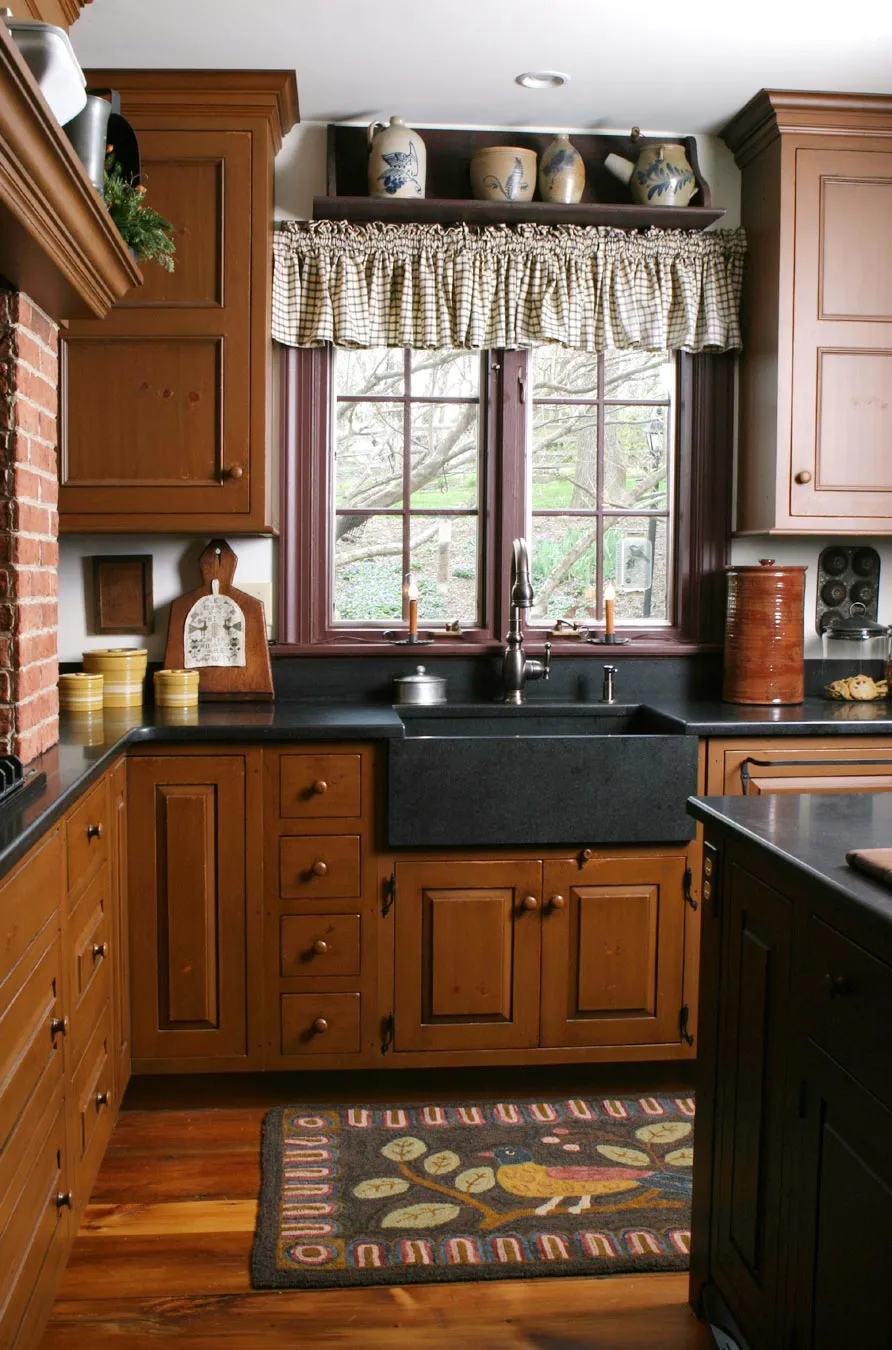
Electrical safety is of utmost importance in any kitchen design, including rustic red ones. Kitchens are high-use areas, with numerous appliances and electrical devices, increasing the risk of electrical hazards. Because rustic kitchens often incorporate older design elements and natural materials, additional care is often needed. Proper electrical planning, installation, and maintenance are crucial to avoiding accidents. Regularly inspecting your electrical systems and following safety guidelines is essential. Ensuring electrical safety includes everything from the placement of outlets to the type of lighting fixtures you choose. Making electrical safety a priority will protect you from electrical shocks and prevent potential fire hazards.
Wiring and Appliance Safety
Safe wiring and appliance usage are essential components of electrical safety in a rustic red kitchen. Ensure that all wiring complies with local electrical codes and is properly installed. Avoid overloading electrical outlets, which can cause overheating and fire hazards. Use appliances that are in good working order and inspect them regularly for any damage to cords or plugs. Make sure you have enough outlets available for your appliances, and if you need more, have them installed by a qualified electrician. Install ground fault circuit interrupters (GFCIs) near water sources such as sinks, as these devices can quickly cut off power to prevent electrical shocks. Never use damaged appliances or devices with frayed cords. Regular checks, maintenance, and safe usage of your appliances and wiring are key to maintaining a safe electrical environment in your rustic red kitchen.
Choosing Safe Electrical Components
Choosing safe electrical components is another crucial element of maintaining a safe rustic red kitchen. Select electrical components that are rated for the specific use in a kitchen environment. Use UL-listed appliances and components that have been tested and certified for safety. The type of lighting you choose can also impact your kitchen’s safety. Use LED lighting, which is energy-efficient, generates less heat, and reduces the risk of fire. Consider the placement of your electrical components to ensure they are not exposed to water or moisture. Ensure that all electrical work is done by a licensed electrician who can guarantee that the work meets all safety standards. By choosing the right components and following safety guidelines, you can create a safe and functional kitchen.
Top 5 Safety Tips for Your Rustic Red Kitchen
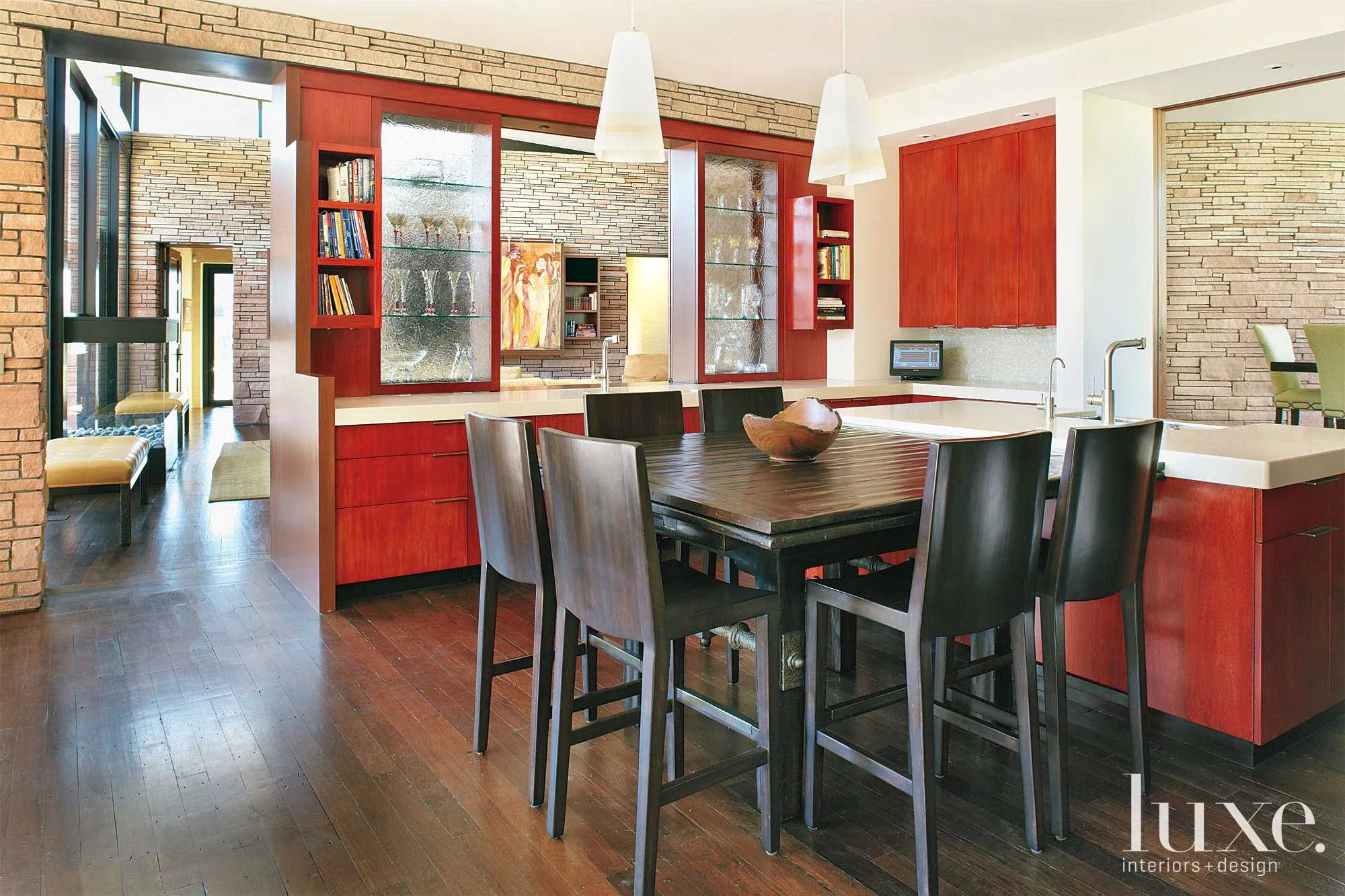
To recap, here are the top 5 safety tips to keep in mind when designing and maintaining your rustic red kitchen. Implementing these practices will significantly reduce potential hazards and allow you to enjoy your space with peace of mind. Prioritizing safety is not just a matter of following guidelines; it is about creating a space that is both beautiful and secure, allowing you and your family to enjoy your kitchen fully.
Tip 1 Inspect Materials Regularly
Regularly inspect all materials in your rustic red kitchen for any signs of damage or wear. This includes checking for cracks in tiles, peeling paint, or any damage to wooden surfaces. Pay close attention to areas near water sources, like sinks and dishwashers, as these areas can be prone to moisture damage. Look for signs of mold or mildew, and address any issues immediately. This will help you identify and resolve potential problems before they can cause more severe issues. Regular inspection ensures the durability of your decor and maintains the overall safety and aesthetic of your kitchen.
Tip 2 Ensure Proper Ventilation
Make sure your kitchen has proper ventilation. Use a high-quality range hood to remove smoke, grease, and odors during cooking. Clean the range hood and its filters regularly to maintain its effectiveness. Consider installing an exhaust fan to vent excess moisture and prevent the growth of mold and mildew. Open windows whenever possible to allow fresh air circulation. Proper ventilation is essential for maintaining good air quality and reducing the concentration of VOCs. Effective ventilation ensures a healthier and more comfortable environment in your rustic red kitchen.
Tip 3 Use Fire-Resistant Materials
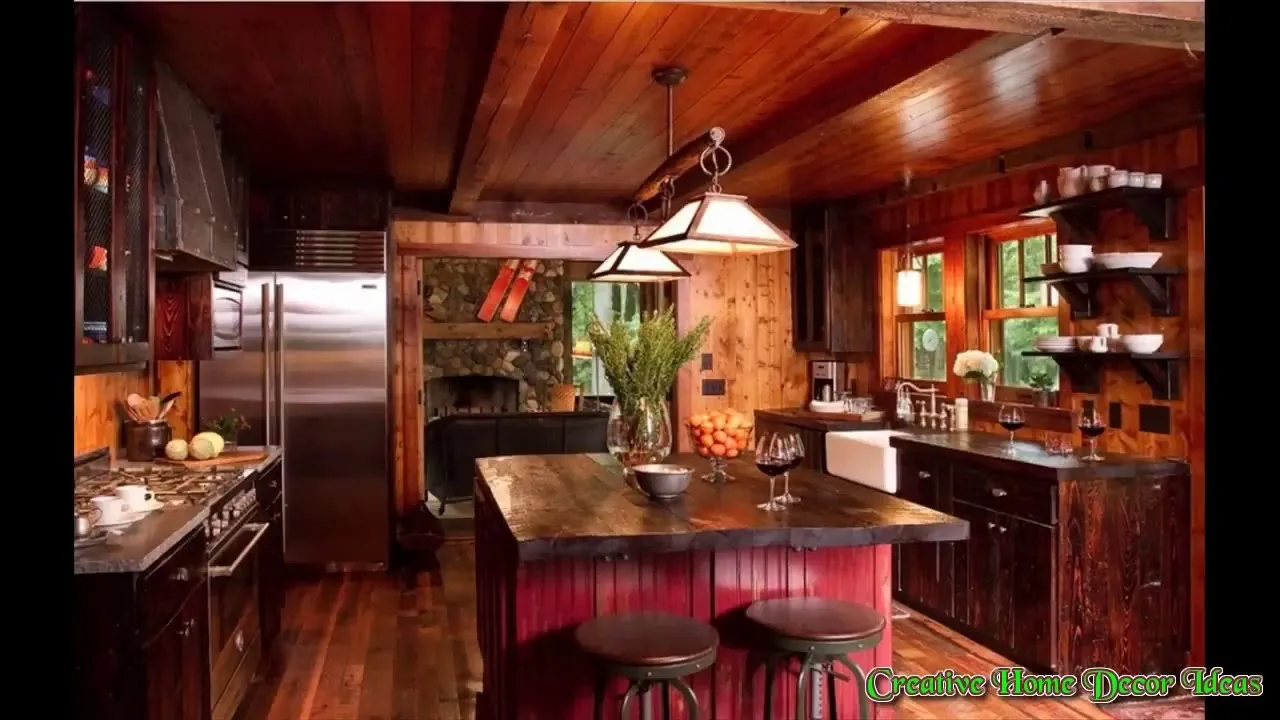
Whenever possible, use fire-resistant materials in your rustic red kitchen. Opt for fire-resistant paints and finishes for your walls and cabinets. Consider using non-combustible materials like stone or tile for countertops and backsplashes, especially in areas near the stove or oven. Install smoke detectors and carbon monoxide detectors throughout your kitchen and test them regularly. Keep a fire extinguisher in an easily accessible location and ensure that everyone in your household knows how to use it. Using fire-resistant materials and implementing these safety measures will protect your kitchen from fire hazards.
Tip 4 Prioritize Electrical Safety
Prioritize electrical safety in your rustic red kitchen. Ensure all electrical work is done by a licensed electrician. Install ground fault circuit interrupters (GFCIs) near water sources. Avoid overloading electrical outlets, and regularly check appliances and cords for damage. Replace any damaged wiring or appliances immediately. Ensure that you have adequate outlets for all your appliances. Never use appliances with frayed cords or damaged plugs. Follow electrical safety guidelines and address any electrical issues right away to minimize the risk of electrical hazards. Prioritizing electrical safety is a key component in creating a safe kitchen.
Tip 5 Choose Low-VOC Products
When choosing paints, finishes, and other materials for your rustic red kitchen, opt for low-VOC or zero-VOC products. Look for certifications like Green Seal or Greenguard, which verify low chemical emissions. These products will help reduce the amount of VOCs in your kitchen, improving air quality and reducing the risk of respiratory issues or other health problems. When it comes to the red color, choose water-based paints or natural stains whenever possible. By choosing low-VOC products, you can create a healthier and safer environment for yourself and your family, enjoying the beauty of your rustic red kitchen without compromising your health.
